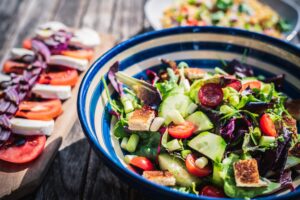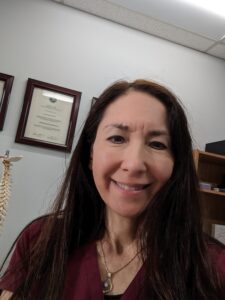
A Chiropractor in West Palm Beach can help you with many ailments by way of adjustments. However, nutrition is certainly a significant factor in your healing. So some of your lifestyle choices outside of the doctor’s office can influence the effectiveness of treatment. By incorporating better nutrition, you can contribute to faster healing and get back to wellness.
In this blog post, we’ll take a closer look at Chiropractic and Nutrition: Inflammatory and Repair Phases of Musculoskeletal Injury.
What is the Inflammatory (Acute) Phase of Musculoskeletal Injury?
Firstly, the inflammatory response occurs during the first few days after your injury or trauma which includes edema (swelling). However, this inflammation is actually necessary for tissue repair. Secondly, this results in pain, redness, and heat. It is a result of vascular and cellular responses that release required chemicals for the healing. And the response allows for an increase in blood flow to the area causing edema. Thirdly, the process “breaks down and digests” damaged cells and sets the stage for the next phase. Fourthly, after chiropractic care has begun, some of the substances below may help expedite healing.
Proteolytic Enzymes
Supplementing with proteolytic enzymes may decrease the inflammatory response by breaking down inflammatory proteins. Again, the proteins cause vascular permeability (ability of a substance to allow gases or liquids to go through it) and pain. And the enzymes significantly improve local circulation by breaking down cell debris and fibrin prior to uptake by the lymphatic system. The lymphatic system is part of the immune system. It keeps body fluid levels in balance and defends the body against infections. The helpful enzymes are derived from bovine (cow), pancreas (trypsin, chymotrypsin), pineapple skin (bromelain), or papaya.
Contraindications (reason not to take) to the use of proteolytic enzymes includes: increased bleeding tendency, systemic infection and allergy to the food sources its made from.

Bioflavonoids
Sometimes referred to as the P vitamin, bioflavonoids are not true vitamins. There are many bioflavonoids: citrin, erodictryol, flavones, hesperin, hesperidin, quercetin, quercetrin, and rutin. You can not produce bioflavonoids, so you have to include it in your diet. Bioflavonoids are generally found in tea, dark chocolate, most fruits and vegetables.
Bioflavonoids may significantly restrict vascular permeability to limit swelling. Also, it may inhibit inflammatory prostaglandins (hormone-like substances that affect several bodily functions, including inflammation and pain). Lastly, bioflavonoids are effective only before the peak of the inflammatory phase and will not reduce established edema.
Vitamin C
Supplementing with vitamin C along with vitamin E may reduce free radical processes in inflamed tissues. Additionally, Vitamin C may support adrenal gland production of anti-inflammatory hormones and may have mild fibrinolytic (keeps blood clots from forming) and antihistamine (relieves allergy) effects.
Research
Numerous studies have proven the effectiveness of proteolytic enzymes for injury and inflammation. Lumbar disc prolapse patients treated with proteolytic enzymes showed improvement in orthopedic tests and decrease in pain medication usage.
In combination with bioflavonoids, vitamin C was included in some studies to help with inflammation.
What is the Proliferative (Subacute/Repair) Phase of Musculoskeletal Injury?
Firstly, this phase begins as the inflammation settles down and your body begins to repair the damaged tissue by laying down new connective tissue. Secondly, in this phase you likely will also have less pain. Thirdly, regeneration of disrupted muscle and connective tissue requires the availability of appropriate protein and non-protein substances to start. Fourthly, nutrient cofactors (helper molecules) are required by synthesizing (combining) enzymes.
Healing Damaged Tissue
Deficiencies of certain nutrients should be corrected to allow optimal tissue growth. These include: sufficient nutritious calories, protein, essential fatty acids, vitamins A, B1, B2, C and E, zinc, copper, manganese and selenium.
Traumatic injury appears to increase requirements for protein (especially branched chain amino acids) and vitamin C. Supplementation of arginine (amino acid, a building block of protein), glycine (amino acid), proline (amino acid from L-glutamate), vitamins A and C, pantothenic acid (B vitamin), and zinc may improve tissue healing.
Connective Tissue (cartilage) Repair
Mucopolysaccharides (glycosaminoglycans, proteoglycans), the nonfibrous component of connective tissue, are composed of small amounts of protein and large amounts of specialized carbohydrates. These carbohydrates are synthesized by chondrocytes (cells found in cartilage) which produce and maintain the cartilaginous matrix. Some minerals are required as well for repair.
Manganese (mineral) is a required cofactor for the synthesis of mucopolysaccharides.
Chondroitin sulfate and other mucopolysacharides are available as supplements.

Chiropractic and Nutrition: Inflammatory and Repair Phases of Musculoskeletal Injury
Spinal and extremity (limbs) adjustments along with recommendations from your chiropractor regarding stretching and strengthening exercises, nutrition, and lifestyle changes can successfully treat a number of common, chronic and acute injuries. Besides from becoming a peak performance athlete, regular chiropractic care will help with digestion, improve sleep, and increase energy. Regular chiropractic adjustments help avoid many of the disorders that take shape as illness.
Are you looking to get out of pain fast, perform better and reduce injuries? Dr. Natalie Meiri, a chiropractor in West Palm Beach can definitely help you! Call 561-253-8984 today to make an appointment or to find out more about Chiropractic and Nutrition: Inflammatory and Repair Phases of Musculoskeletal Injury.
References: Handbook of Preventative and Therapeutic Nutrition by James M. Gerber,M.S., D.C., 2007
Video about Meiri Chiropractic